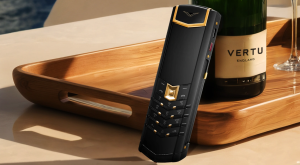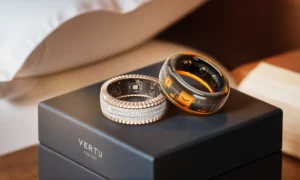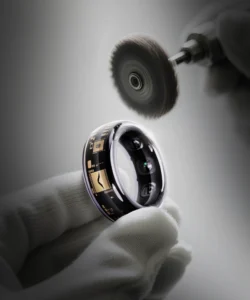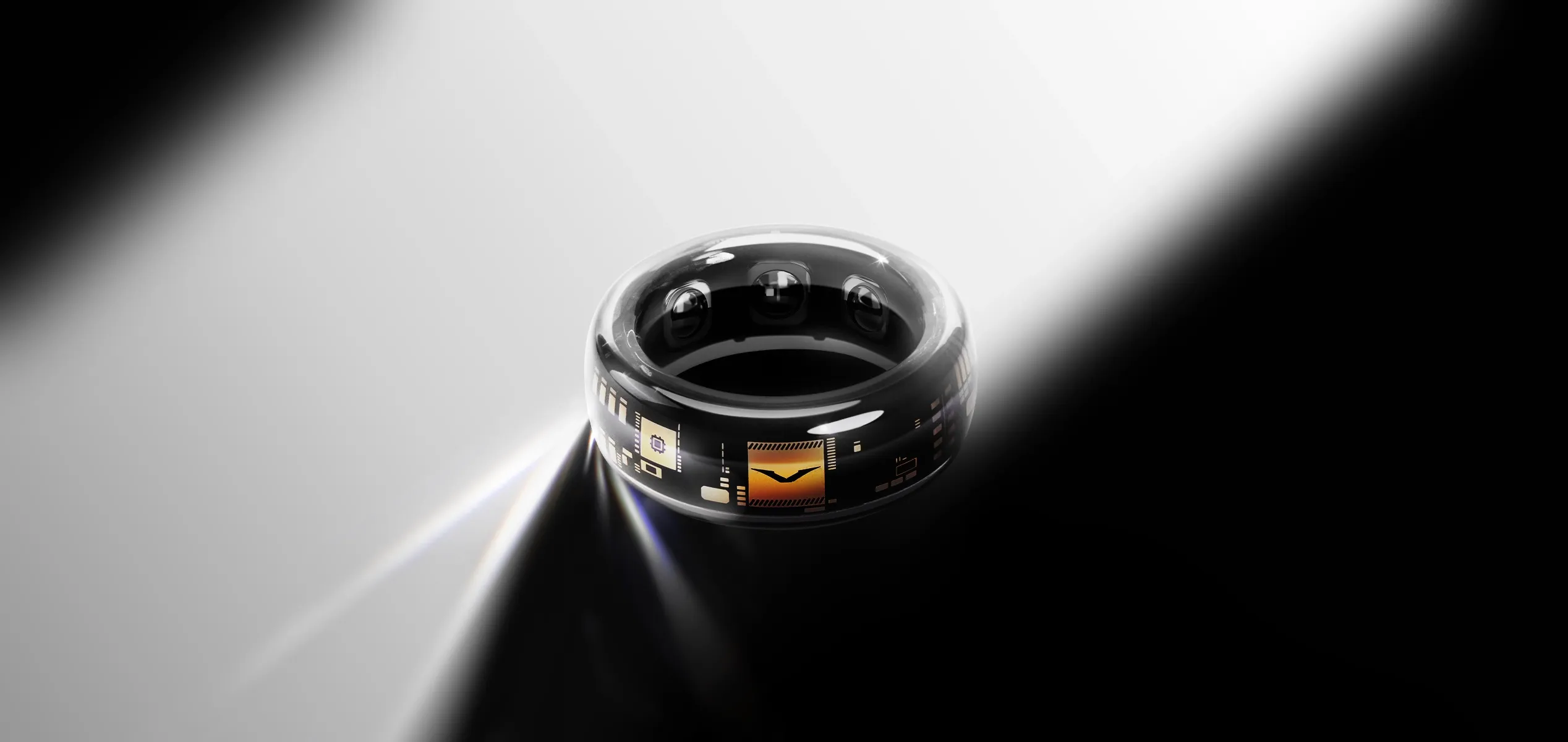
You can now track your health in real time with smart rings that fit right on your finger. These small devices give you instant, personalized insights, letting you stay on top of your health without any hassle. The market for smart rings is booming, with a projected value of over $1 billion by 2030. People love how health wearable rings make health monitoring simple and holistic. With wearable technology, you get continuous monitoring, bringing digital health closer to everyday life. If you want to understand your metabolic health definition, smart rings put that power in your hands.
Key Takeaways
-
Smart rings provide real-time, continuous tracking of important health markers like heart rate, sleep, and blood oxygen, helping you stay informed every day.
-
Metabolic health depends on multiple factors such as blood sugar, cholesterol, blood pressure, and waist size, which smart rings help monitor holistically.
-
Advanced sensors and AI in smart rings turn raw data into personalized advice, making it easier to improve your health with simple lifestyle changes.
-
Using smart rings encourages proactive health management by spotting early signs of problems and supporting better habits before serious issues arise.
-
While smart rings offer convenience and powerful insights, users should consider data accuracy, privacy, and cost when choosing the right device.
Metabolic Health Definition
When you hear the term metabolic health definition, you might wonder what it really means. In simple terms, it describes how well your body processes and uses energy from food. This includes how your body handles sugar, fat, and cholesterol. Scientists and doctors use the metabolic health definition to decide if your body is working at its best or if you might be at risk for problems like diabetes or heart disease. Right now, there isn’t just one way to define it. Many studies use different methods, but most agree that you need to look at several health metrics together, not just one.
Key Markers
You can think of the metabolic health definition as a checklist. Doctors look at several key markers to see how your body is doing. Here’s a table that shows some of the most important ones:
|
Metabolic Marker |
What It Tells You |
Why It Matters |
|---|---|---|
|
How your body handles sugar |
High levels can mean diabetes risk |
|
|
Triglycerides |
Type of fat in your blood |
Too much raises heart disease risk |
|
HDL Cholesterol |
“Good” cholesterol |
Higher is better for your heart |
|
Blood Pressure |
Force of blood in your arteries |
High pressure can damage your heart |
|
Waist Size |
Fat around your belly |
More belly fat means higher risk |
Doctors also check other markers like LDL particle number, insulin resistance, and inflammation. Using a panel of markers helps you get a full picture of your metabolic health features. This approach makes tracking your health more accurate and helps you spot problems early.
Importance
Why should you care about the metabolic health definition? Keeping an eye on these markers helps you catch problems before they get serious. Here’s why tracking matters:
-
You can spot early signs of trouble, like high blood sugar or high blood pressure.
-
Tracking helps you and your doctor make a plan to stay healthy.
-
You can make changes to your diet, exercise, and sleep to improve your numbers.
-
Early action saves you time and money by preventing bigger health issues later.
-
Continuous tracking with smart rings or other devices keeps you in control of your health journey.
Tip: Regularly checking your health metrics gives you the power to make smart choices every day.
The metabolic health definition keeps changing as scientists learn more. Right now, experts agree that you need to look at many factors, not just one. By tracking these markers, you can take charge of your health and lower your risk for chronic diseases.
Smart Ring Technology
Sensors and Data
When you slip a smart ring onto your finger, you unlock a world of health information. These rings use tiny sensors to collect biometric signals from your body. You might wonder what these sensors actually do. Here’s a quick look:
-
Optical sensors (PPG) measure your heart rate and blood oxygen (SpO2).
-
Temperature sensors keep track of your body temperature all day.
-
Accelerometers and gyroscopes watch your movement, activity, and sleep patterns.
-
Bioimpedance sensors check your hydration and body composition.
All these sensors work together to give you a steady stream of real-time data. You get updates on your heart rate, sleep stages, blood oxygen, and even your body temperature. This helps you spot changes in your health before you feel any symptoms. Many rings also use Bluetooth to send your data straight to your phone, making tracking easy and automatic.
You can see how much these sensors have improved by looking at the numbers. For example, the Oura Ring 4 boosted its blood oxygen sensing signal quality by 120% compared to the previous model. It also increased the accuracy of overnight SpO2 readings by 30%. The ring now has 31% fewer gaps in nighttime heart rate data, so you get a clearer picture of your health.
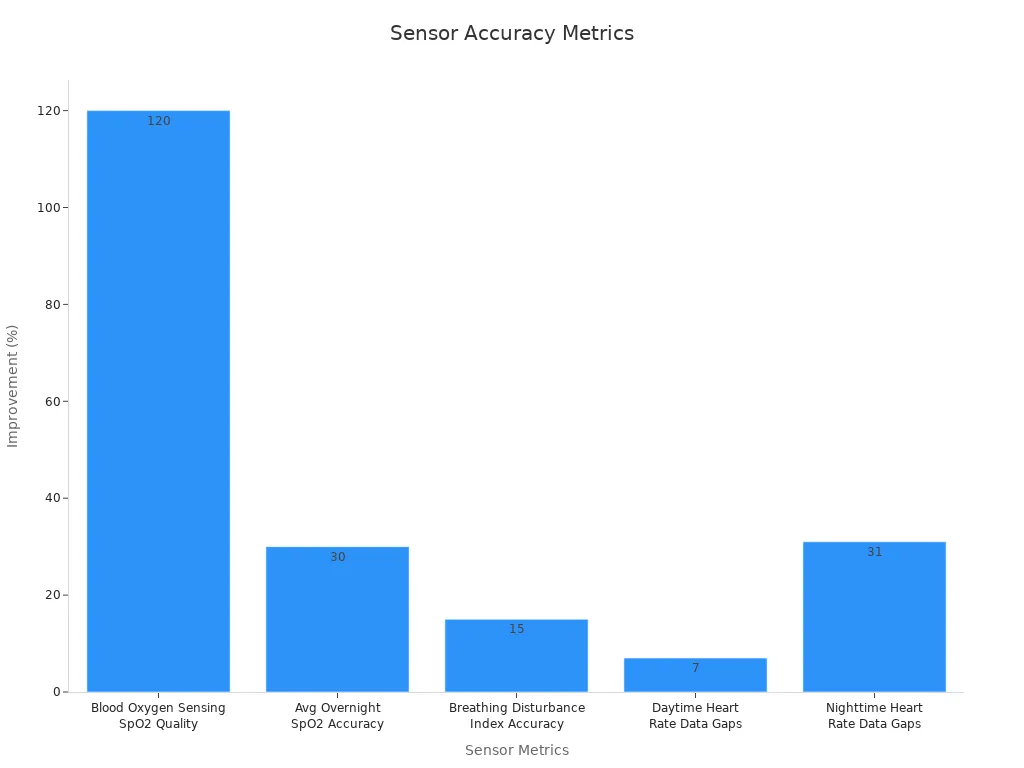
A recent case study found that a smart ring could recognize 20 different daily activities with 98.10% accuracy. That’s better than many smartwatches or fitness bands. The ring’s small size and light weight make it comfortable for all-day wear, so you can keep tracking your health without even noticing it.
Here’s a table that shows how sensor performance has improved:
|
Metric / Result |
Description / Validation Methodology |
Improvement / Accuracy Gain |
|---|---|---|
|
Blood Oxygen Sensing (SpO2) Signal Quality |
Compared perfusion index signal quality between Oura Ring 4 and Gen3 SpO2 channels |
120% improvement |
|
Average Overnight SpO2 Accuracy |
Percentage of nights with mean SpO2 within 2 points of reference value |
30% increase |
|
Breathing Disturbance Index (BDI) Accuracy |
Compared against human-annotated SpO2 desaturation events |
15% more accurate |
|
Daytime Heart Rate Data Gaps |
Defined as 15-minute segments with missing heart rate data |
7% fewer gaps |
|
Nighttime Heart Rate Data Gaps |
Defined as 5-minute segments with missing heart rate data |
31% fewer gaps |
Note: These improvements mean you get more reliable health information every day.
Smart rings now help with more than just personal health. Doctors use them for remote patient monitoring and early disease detection. Athletes use them to optimize performance. You can use them to manage chronic conditions or just to keep an eye on your daily wellness.
AI Analytics
Collecting data is only the first step. The real magic happens when artificial intelligence (AI) steps in. AI analytics take all the biometric data from your ring and turn it into useful advice. You don’t just see numbers—you get insights that help you make better choices.
AI looks for patterns in your sleep, activity, and even your glucose levels. For example, if your ring notices your heart rate is higher than usual, it might suggest you rest or hydrate. If your sleep quality drops, the ring can recommend changes to your bedtime routine.
Some smart rings, like the Oura Ring, use AI-powered features to give you personalized health tips. The ring’s “Meals” and “Glucose” functions analyze how your meals, stress, and activity affect your glucose levels. This helps you understand how your body reacts to different foods and routines. The AI-powered advisor offers guidance that feels personal and easy to follow.
A scientific review found that AI makes wearable devices much smarter. It helps spot health problems early and gives you advice that fits your unique needs. AI can even correct errors in the data, so you get more accurate results. This means you can trust the advice your ring gives you.
You also get a more complete view of your health. AI combines your sleep, activity, and nutrition data to show you how everything connects. You see how your choices affect your body in real time. This makes tracking your health simple and meaningful.
Tip: Let AI do the heavy lifting. You just focus on living your best life.
Smart rings are changing the way you manage your health. With advanced sensors and powerful AI, you get a digital health partner that fits right on your finger.
Smart Ring Capabilities
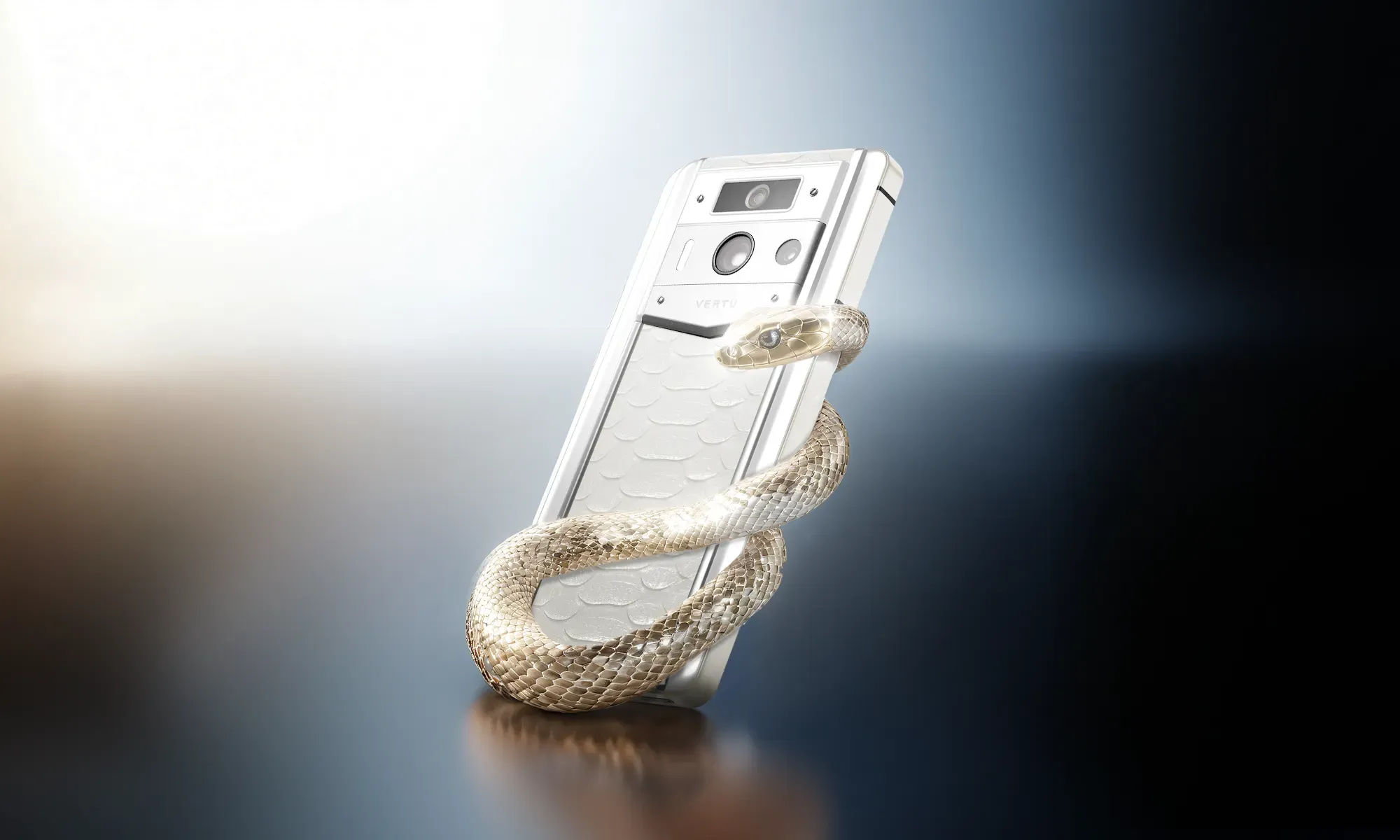
Continuous Monitoring
You want to know what is happening inside your body, not just once a year at the doctor’s office, but every day. That’s where smart ring capabilities really shine. These rings keep monitoring your health around the clock. You get updates on your heart rate, sleep, blood oxygen, and even your activity levels. With this kind of tracking, you can spot changes before they turn into bigger problems.
Imagine waking up and seeing how well you slept last night. You check your sleep tracking data and notice you got more deep sleep than usual. Maybe you see your heart rate was steady, or your blood oxygen stayed in a healthy range. This information helps you make better choices for your day.
A recent 12-month study showed that people who used a wearable ring for continuous biometric feedback made big improvements in their health. They fell asleep faster, moved more, and even improved their heart health. Their body fat dropped, and their heart rate variability went up. These are all important markers for your metabolic health. The study found that when you get regular feedback, you are more likely to stick with healthy habits. You start to see real changes that last.
Continuous monitoring also helps people with diabetes. Real-time glucose tracking lets you see how your food and exercise affect your blood sugar. Clinical trials have shown that this kind of monitoring can lower your average blood sugar and help prevent serious health problems. The FDA now allows some continuous glucose monitors to be sold over the counter, making them easier to get. While smart rings are not yet approved for direct glucose measurement, they still offer powerful tracking for many other health markers.
Tip: The more you know about your body, the better you can take care of it. Continuous monitoring gives you that power.
Personalized Insights
You don’t just want numbers—you want actionable insights that make sense for your life. Smart ring capabilities go beyond simple tracking. They use AI to turn your data into advice you can use. For example, if your sleep tracking shows you are not getting enough deep sleep, your ring might suggest going to bed earlier or cutting back on screen time before bed.
Personalized insights help you make changes that fit your unique needs. Studies show that when you get advice tailored just for you, you are more likely to stick with it. In fact, people who get personalized health tips are 13% more likely to follow through with healthy habits in metabolic health and 52% more likely in heart health. AI-powered coaching can even double your weight loss compared to using AI alone.
Here are some ways personalized insights can help you:
-
Suggesting the best time for exercise based on your activity monitoring and sleep patterns.
-
Recommending foods that keep your blood sugar steady.
-
Alerting you when your stress levels rise, so you can take a break.
-
Helping you spot trends in your health before they become problems.
Some smart rings use digital twin technology. This means they create a digital model of you, using your health data to predict what might happen next. These models can help you and your doctor make better decisions about your care. Personalized nutrition programs also use your data to suggest meals that work best for your body, leading to better weight control and lower risk for heart disease.
Note: Actionable insights from your smart ring make it easier to take charge of your health. You get advice that fits your life, not just generic tips.
Smart ring capabilities give you the tools to understand your body, make smarter choices, and stay ahead of health problems. With continuous monitoring and personalized insights, you can turn everyday tracking into real results.
Health Wearable Rings in Metabolic Health
Integration with Glucose Tracking
You want to know how your body handles sugar every day. Health wearable rings now make this possible with real-time glucose monitoring and continuous glucose monitoring features. The Aura Ring by VERTU stands out with its advanced nano-sensor chip. This chip tracks your glucose levels all day, giving you over 85% predictive accuracy. You get proactive health guidance and weekly wellness reports, so you always know where you stand. The ring’s crystal composite design feels like a second skin, blending comfort with style.
Other smart rings also focus on metabolic health tracking. The Ultrahuman Ring AIR pairs with continuous glucose monitors, letting you see how your food and activity affect your glucose insights. Oura Ring partners with Dexcom to bring glucose data into its app, making metabolic health tracking even easier. Here’s a quick look at how top rings compare:
|
Smart Ring |
Key Metabolic Health Features |
Unique Selling Points |
|---|---|---|
|
Continuous glucose, heart rate, sleep, SpO2, blood pressure |
Artisanal design, nano-sensor chip, proactive guidance |
|
|
Oura Ring Gen 4 |
Sleep, readiness, HR, HRV, SpO2, temperature, glucose integration |
Best-in-class sleep insights, trusted by athletes |
|
Ultrahuman Ring AIR |
HR, HRV, sleep, temperature, movement, CGM pairing |
Tight metabolic integration, no subscription |
You get a comprehensive wellness tool that fits your lifestyle and helps you manage your metabolic health every day.
Holistic Health Metrics
Health wearable rings do more than just glucose tracking. They give you a full picture of your body by monitoring many health metrics at once. You can track your heart rate, body temperature, oxygen levels, hydration, activity, and sleep. This holistic approach helps you spot trends and make better choices for your health.
Oura Ring leads with sleep tracking and readiness scores, while Ultrahuman focuses on metabolic feedback and fitness. The Aura Ring by VERTU brings together metabolic health features with proactive health guidance, making holistic metabolic health management simple and stylish. These rings connect with health apps and even electronic health records, so you and your doctor can use the data for better care.
-
You get real-time updates on your health.
-
You can share your data with your doctor for remote monitoring.
-
You stay engaged and learn more about your body every day.
With these rings, you hold a comprehensive wellness tool right on your finger. You can take charge of your metabolic health and enjoy a smarter, more connected way to live.
Benefits of Smart Rings
Proactive Management
Smart rings help you take charge of your health before problems start. You get real-time updates on your heart rate, sleep, stress, and even glucose levels. This means you can spot changes early and make better choices every day. With smart rings, you do not have to wait for your yearly checkup. You see your health trends right on your phone.
Here’s a quick look at how smart rings support proactive health management:
|
Benefit Type |
How Smart Rings Help You |
|---|---|
|
Early Detection |
Spot changes in heart rate or stress before you feel sick |
|
Personalized Guidance |
Get tips for better sleep, stress relief, or healthy habits |
|
Continuous Monitoring |
Track your health 24/7, not just during doctor visits |
|
Remote Patient Monitoring |
Share your data with your doctor for better care |
|
Stress Management |
Use breathing exercises and mindfulness tips based on your real-time stress levels |
Did you know? In 2023, 44% of Americans owned a wearable health device. Most people want health monitoring that fits their lifestyle.
Smart rings use advanced sensors and AI to give you feedback that matters. For example, the Dhyana Smart Ring checks your heart rate, skin temperature, and blood oxygen. It then suggests ways to relax if your stress goes up. Oura Ring has even been used in clinical trials to help doctors spot illness early. When you use a smart ring, you get the power to manage your health every day.
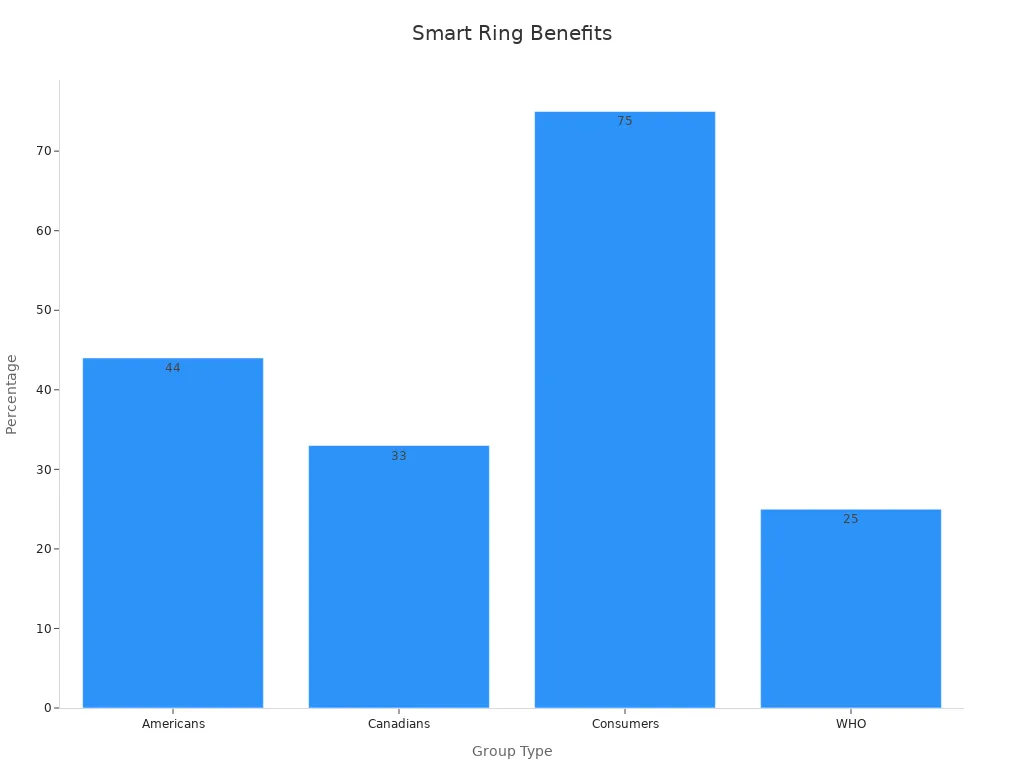
Convenience
You want health monitoring that fits your busy life. Smart rings make this easy. You just wear the ring, and it does the rest. No wires, no bulky devices, and no need to remember to check your stats. The ring tracks your health while you sleep, work, or play.
A recent study compared a smart ring for blood pressure to the old cuff method. The smart ring was easier to use, more comfortable, and just as accurate. You can check your blood pressure anytime, even while sleeping. This makes long-term monitoring simple and stress-free.
Many people find smart rings more convenient than wristbands or chest straps. Wristbands can be bulky, and chest straps are not comfortable for daily use. Smart rings are small, light, and look like regular jewelry. You can wear them all day without noticing.
Tip: With a smart ring, you get health monitoring that fits your style and routine. You do not have to change your habits to stay healthy.
Smart rings give you a new way to track your health. You get the benefits of advanced technology in a form that is easy to use and fits your life.
Challenges of Smart Rings
Data Accuracy
You want your smart ring to give you reliable health information. Sometimes, though, these devices can struggle with accuracy. Many smart rings are not regulated by health authorities, so their measurements can vary. You might notice differences in heart rate, blood pressure, or oxygen readings from one device to another. Some rings work best when you are resting, but they can have trouble during exercise or when your hands are cold. Motion and environmental noise can also affect the sensors, making the data less precise.
-
Smart rings often use light sensors to track your heart rate and oxygen. These sensors can pick up extra signals from movement or changes in temperature.
-
Some devices do not always meet clinical standards, which can make doctors cautious about using the data for medical decisions.
-
The way smart rings process your data is sometimes hidden, so you may not know exactly how your numbers are calculated.
Brands are working hard to fix these issues. For example, new step-counting algorithms and better sensors help reduce errors. Some rings now use machine learning to tell the difference between real steps and other movements. Studies show that finger-based sensors can be more accurate than wrist-based ones, especially when you are at rest. As technology improves, you can expect even better accuracy from future smart rings.
Privacy and Cost
When you use a smart ring, you share personal health data. Many people worry about who can see this information and how it is protected. Sometimes, smart rings do not have strong enough security, which can put your data at risk. People want better privacy features and more control over their information.
-
Almost half of users worry that companies could use their health data to learn about their habits.
-
About a quarter of people say they would upgrade their device if it had better data protection.
-
Many users want stronger privacy and security in their wearables.
Cost is another big challenge. Smart rings can cost between $250 and $400, which is a lot for many families. Some people also need internet access to use all the features, which can be hard in rural or low-income areas. Because of these barriers, not everyone can benefit from smart ring technology yet.
Note: As more people use smart rings, brands are adding stronger privacy tools and working to make devices more affordable. This helps build trust and makes health tracking easier for everyone.
Future of Smart Rings
Evolving Capabilities
Smart rings keep getting smarter every year. You now see rings that track more than just your steps or sleep. They use advanced sensors to measure your heart rate, blood oxygen, and even your metabolic health. Some rings, like the Oura Ring, use an 18-path multi-wavelength PPG system. This technology adapts to your body and improves heart rate accuracy by 20%. AI algorithms look at your biometric data and spot early changes in your health. You get alerts before problems start.
Here’s a quick look at how these features are changing:
|
Feature/Aspect |
الوصف |
|---|---|
|
Smart Sensing Technology |
Sensors adapt to your body for better accuracy. |
|
AI Algorithms |
Spot early health changes and give you tips. |
|
Glucose Monitoring Integration |
Combine glucose, sleep, and activity data for a full picture of metabolic health. |
|
Holistic Data Integration |
Mix sleep, readiness, activity, and metabolic data for better health advice. |
You can now use smart rings as your main health tool. They connect to your phone and send your data to your doctor. This makes remote care and digital health easier than ever.
Personalized Care
You want care that fits your life, not just general advice. Smart rings now use AI to give you personalized feedback. For example, you can take a photo of your meal, and the ring’s app will break down the nutrition for you. It shows protein, fiber, sugars, fats, and carbs. You do not have to count calories. The AI coach gives you gentle, non-judgmental tips to help you reach your goals.
|
Feature/Aspect |
الوصف |
|---|---|
|
Meals Feature |
AI checks your meal photos and explains the nutrition. |
|
Nutrition Breakdown |
Quick summary of what’s in your food. |
|
Non-judgmental Guidance |
Friendly feedback to support your habits. |
|
Glucose Monitoring with Stelo |
24/7 glucose tracking in context with meals, sleep, and activity. |
|
AI-Powered Health Coach |
Personalized advice based on all your health data. |
You see real results. In one study, people using smart rings improved their time in range for glucose from 74.7% to 85.5%. People with type 2 diabetes also saw big gains. The Ultrahuman Ring AIR helped users sleep better, manage stress, and boost their overall health. Smart rings are moving healthcare from reactive to proactive. You get help before problems start, making it easier to manage your metabolic health every day.
Tip: The future of smart rings is all about you—your data, your habits, and your health. Get ready for even more personalized and connected care.
Smart rings change how you watch your health. You get real-time updates, simple tips, and a tool that fits your life. Smart rings make metabolic health tracking easy and personal. You can spot changes early and take action fast. If you want to take charge of your health, try smart rings. Explore the latest options, read reviews, and see which smart rings match your needs. Your health journey starts with one small step.
التعليمات
What can a smart ring track for my health?
A الخاتم الذكي tracks your heart rate, sleep, blood oxygen, body temperature, and sometimes glucose. You get real-time updates right on your phone. Some rings even give you tips to help you feel your best.
How do I charge a smart ring?
Most smart rings come with a small charging dock. You just place your ring on it. Charging usually takes about one to two hours. The battery can last up to a week or more, depending on the brand.
Is my health data safe with a smart ring?
Your data stays private with most smart rings. Brands use encryption to protect your information. Always check the privacy policy before you buy. You can control what you share and who sees your health stats.
Can I wear a smart ring all day and night?
Yes! Smart rings feel light and comfortable. You can wear them while you sleep, work, or exercise. Many rings are water-resistant, so you do not need to take them off for handwashing or showers.
Do I need a smartphone to use a smart ring?
You need a smartphone to see your health data and get insights. The ring sends your information to an app. You can check your stats, set goals, and get advice right from your phone.




